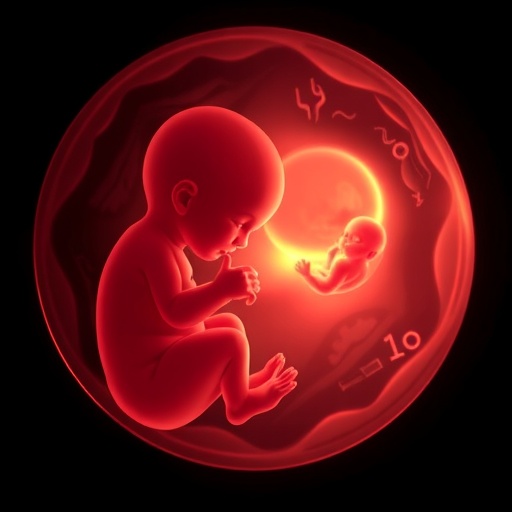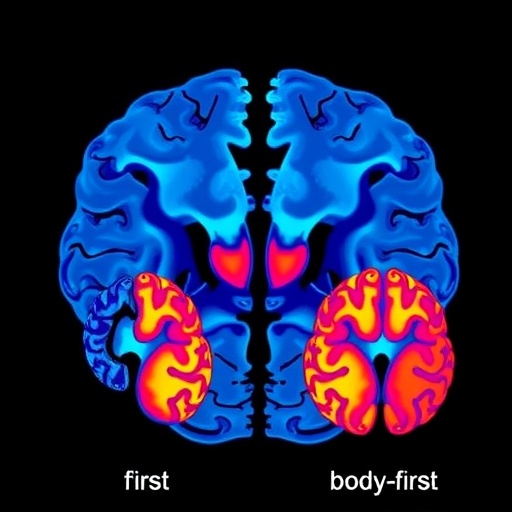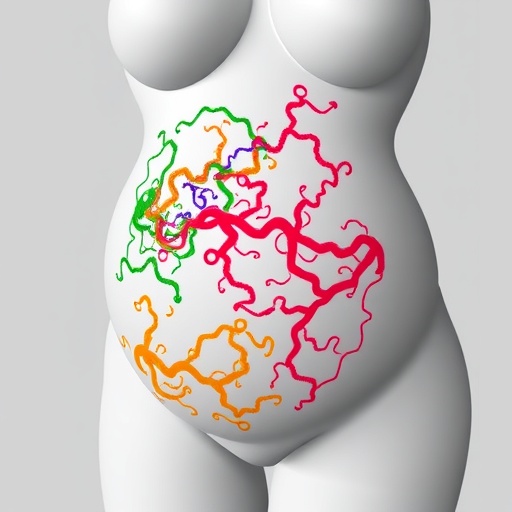In the ever-evolving realm of reproductive medicine, the quest to optimize assisted reproductive technologies (ART) remains at the forefront of research. Recent studies have continuously sought to enhance the outcomes associated with embryo transfer, particularly concerning the delicate balance between maximizing the potential for live birth and minimizing risks to the developing fetus. The groundbreaking study by Li et al., published in the Journal of Translational Medicine, explores a crucial aspect of this balance, examining the implications of double vitrification-warming cycles combined with single blastocyst biopsies on live birth rates after the transfer of euploid blastocysts.
Vitrification, a method of cryopreservation that rapidly freezes embryonic cells, has gained widespread use in ART due to its ability to maintain high embryo viability upon thawing. This study aims to determine whether performing two vitrification-warming cycles, along with a single biopsy of the blastocyst, has any detrimental effects on the success rates of euploid blastocyst transfers. The term “euploid” refers to embryos that possess the correct number of chromosomes, thus having a higher likelihood of leading to a healthy pregnancy.
The innovative aspect of this research is its design, utilizing propensity score matching, a statistical technique that allows for the comparison of outcomes between two groups while controlling for confounding variables. By matching patients based on similar characteristics, the authors aimed to eliminate biases and ensure that the results reflected genuine differences in outcomes attributable to the intervention being studied.
The findings of the study are essential for clinicians and patients engaged in the frequently unpredictable journey of IVF cycles. By demonstrating that double vitrification-warming cycles coupled with a single blastocyst biopsy do not adversely affect live birth rates, this research offers reassurance to those considering these procedures. It also contributes to the growing body of literature supporting the use of advanced techniques without compromising patient outcomes.
As couples grapple with the emotional and financial stakes of ART, the need for evidence-based approaches to treatment becomes even more pressing. The information derived from studies like this not only empowers healthcare providers to make informed choices regarding patient care but also aids patients in understanding their treatment options. Confidence in the chosen protocol can significantly impact the psychological experience of undergoing ART, alleviating some of the pervasive anxieties that accompany fertility treatments.
Moreover, this study encourages further exploration into the nuances of embryo handling techniques and their implications on the outcomes of ART procedures. The concept of biopsy, which involves the removal of a cell or a small group of cells from the blastocyst for genetic testing, plays a critical role in determining the embryo’s chromosomal integrity. When combined with vitrifaction techniques, the implications for embryo survival and eventual pregnancy outcomes require thorough examination.
While the findings appear promising, they also pave the way for further questions, particularly regarding the long-term outcomes for children born from embryos subjected to these procedures. Understanding the genetic and health implications of such advanced ART techniques is a crucial avenue for future research. Pediatric studies focusing on the health and development of children conceived through IVF with these specific procedures will be critical to ensuring that the long-term health implications are well-understood for future generations.
Couples considering IVF may feel overwhelmed by the multitude of options and technologies currently available, often leading to confusion regarding the best choice for their unique circumstances. As such, it becomes vital for reproductive specialists to communicate transparently about the risks and benefits of each approach. Empowering patients with comprehensive knowledge can help to alleviate the fears that accompany the decision-making process and allow them to participate actively in their treatment pathways.
As significant as the study’s findings are on individual decision-making, they also serve as a benchmark for clinics worldwide. The ability to offer evidence-supported protocols not only enhances clinical credibility but also improves patient satisfaction and trust in fertility treatments. This level of transparency can set a clinic apart in a competitive market, enabling them to attract patients who are seeking validated assistance with their reproductive challenges.
In conclusion, the research conducted by Li et al. adds a significant chapter to our understanding of ART, specifically in the context of vitrification and embryo biopsy. With their compelling conclusions indicating no detrimental effect on live birth rates, this study empowers both patients and providers to embrace these advanced techniques with confidence. The ongoing exploration of ART and its related methodologies must continue, taking note of the fine balance between innovation and ethical practice to ensure both immediate and long-term health for mothers and children alike.
In reflecting on the broader implications of this study, the medical community is reminded of the dual responsibility of advancing science while safeguarding the well-being of patients. As researchers delve deeper into the technology associated with ART, they must remain vigilant, combining technological advancements with ethical considerations. The pursuit of excellence in reproductive medicine will ultimately rely on an unwavering commitment to patient-centered care, ensuring that every couple’s journey is met with the highest standard of compassion and expertise.
As findings of this nature become more commonplace, they signal a shift in how fertility treatments are approached and understood. The future of reproductive medicine looks increasingly bright, as more research studies like that of Li et al. share key insights that not only shape clinical practices but also transform patient experiences in profound ways. By ensuring that advancements are communicated effectively and understood holistically, patients can embark on their journey through assisted reproduction with renewed hope and informed choices.
Subject of Research: The impact of double vitrification-warming cycles and single blastocyst biopsy on live birth rates from euploid blastocyst transfers.
Article Title: Double vitrification-warming cycles coupled with one blastocyst biopsy do not affect the chance of live birth after an euploid blastocyst transfer: a propensity score matching study.
Article References:
Li, X., Li, H., Song, W. et al. Double vitrification-warming cycles coupled with one blastocyst biopsy do not affect the chance of live birth after an euploid blastocyst transfer: a propensity score matching study.
J Transl Med (2025). https://doi.org/10.1186/s12967-025-07481-4
Image Credits: AI Generated
DOI: 10.1186/s12967-025-07481-4
Keywords: reproductive medicine, vitrification, blastocyst biopsy, live birth rates, assisted reproductive technologies.
Tags: assisted reproductive technologies researchblastocyst biopsy techniquesdouble vitrification warming cyclesembryo transfer success ratesembryo viability after vitrificationeuploid blastocyst transferfertility treatment outcomesimpact of cryopreservation on fertilityimplications of cryopreservation methodslive birth rate optimizationreproductive medicine advancementsstatistical methods in reproductive studies





